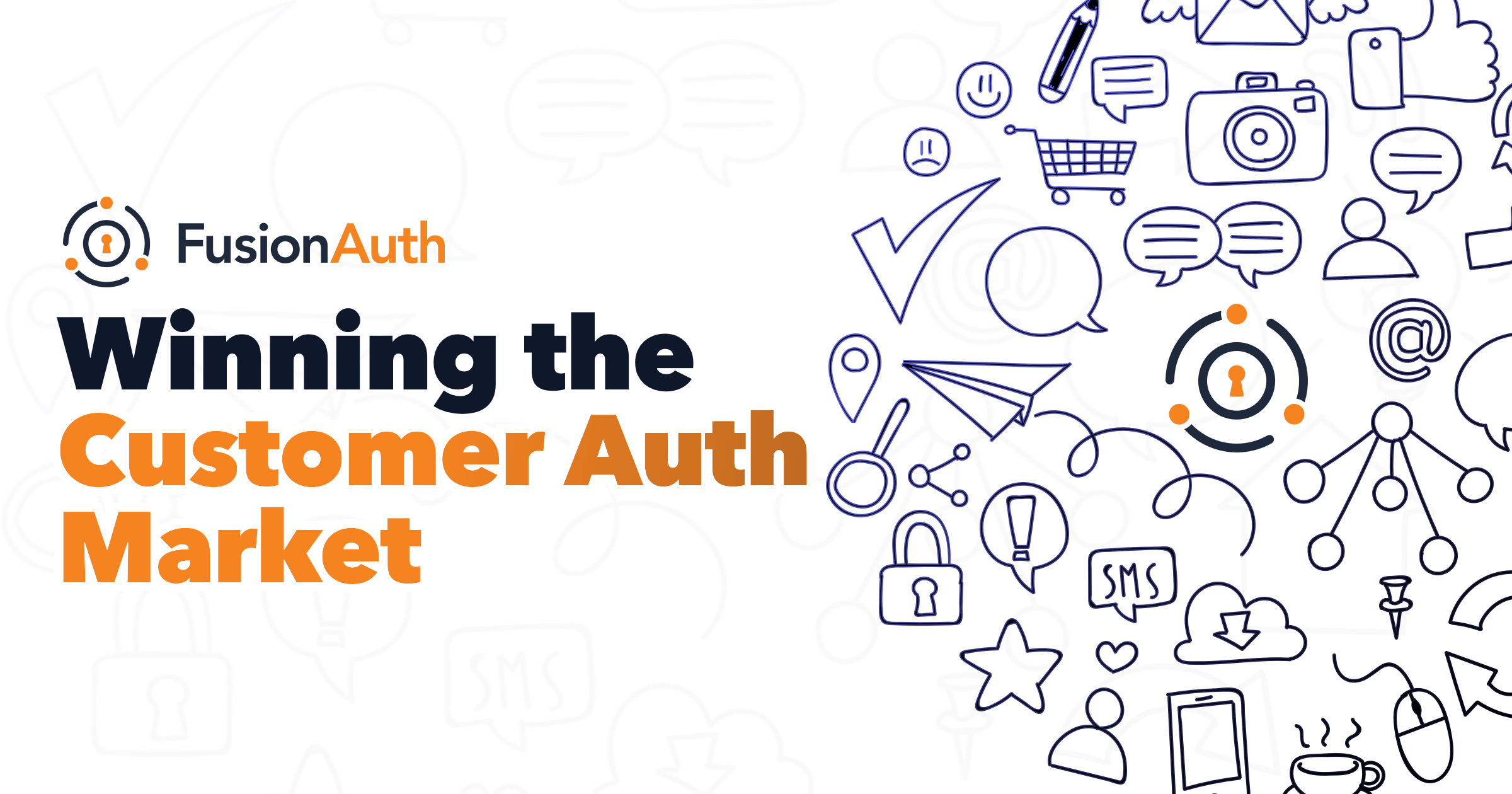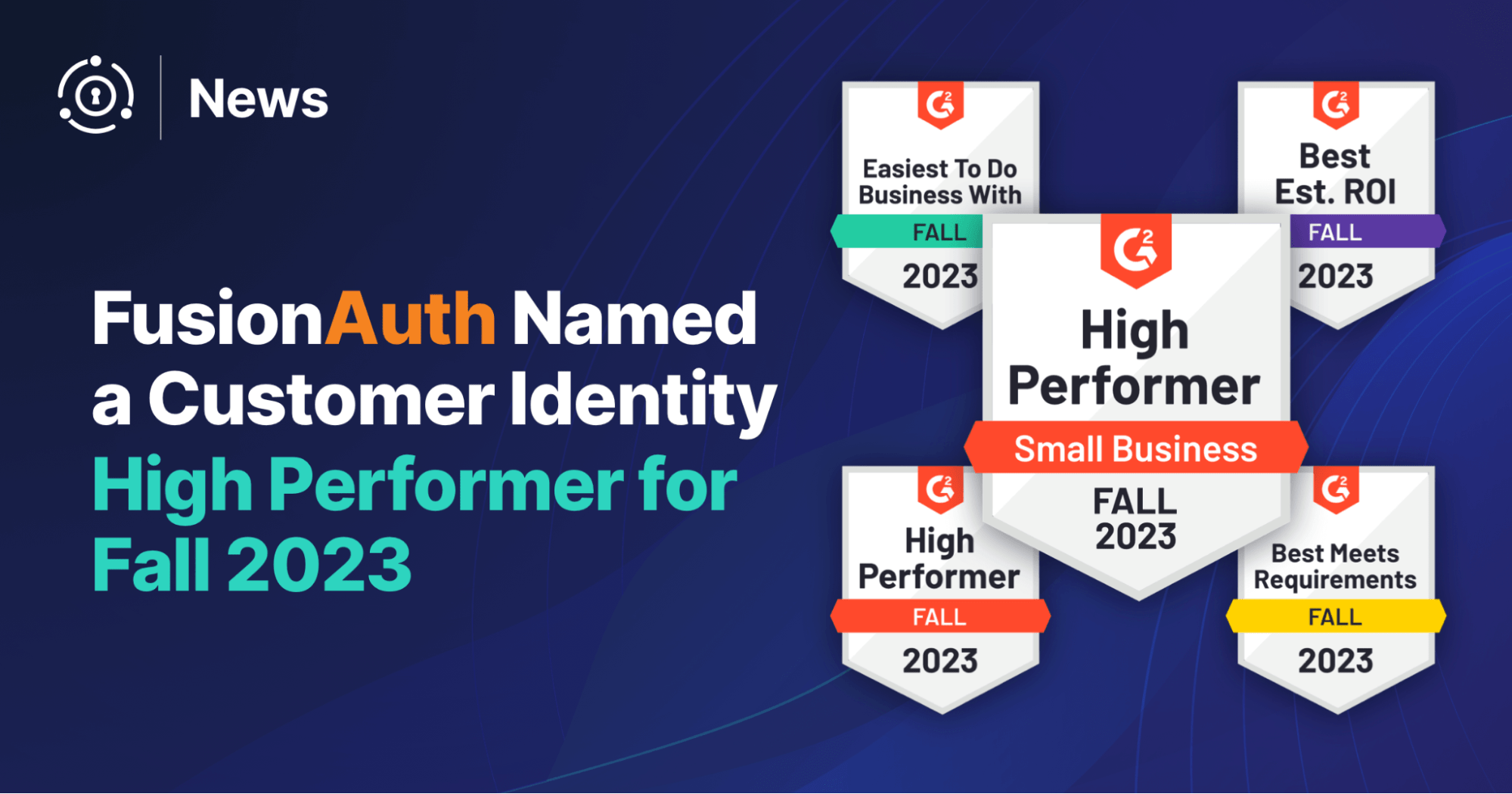My name is Mark van Oppen, and I am the Vice President of Sales for FusionAuth. Over the last 10 years, I have had the privilege of selling wonderful products rooted in open-source software and infrastructure. At Heptio I was the first sales hire and we focused on Kubernetes, after scaling the business we were acquired by VMWare. Before that I was the senior seller at Blue Box Group, representing OpenStack private cloud infrastructure before we were acquired by IBM.
Last week the FusionAuth CEO and founder, Brian Pontarelli, wrote about our growth and the fact we are not reliant on venture funding in the wake of the SVB collapse.
My goal today is to explain our market position and the customer identity and access management (CIAM) landscape in more detail. Despite previous successful periods of growth, I can confidently say that I have never been in such a strong position to deliver value for customers while being backed by foundationally sound business fundamentals.
Excited to share more below.
The problem CIAM solves
Any adult over the last 10 years has direct experience interacting with login technology. Virtually every industry has embraced the concept of customer login to deliver a tailored experience; retail, streaming services, banking, healthcare, fintech, gaming, and of course any type of SaaS; requesting a login and getting access to your account online is now an expectation.
This anecdotal trend observation is backed up by data; the identity market is expected to grow more than 13% CAGR over the next five years. Companies lean on this technology because it’s a business imperative. Nobody can afford to forgo the market intelligence and insight that customer identity offers, and it is often a necessary security gate for service delivery.
Additionally, customer login has emerged as a standalone function within the microservices design strategy. Interacting with more discrete services, frequent updates, and a large number of moving parts has made customer login a more nuanced and complicated thing. This evolution means that customer login is an obvious candidate to require its own service level and availability targets, a core function often neglected until it breaks.
Customers being able to log in is akin to being “Open for Business,” and it doesn’t get more critical.
The CIAM market
The market for identity technology is reasonably mature, but customer identity has become a distinct category. No provider has done more to solidify the terminology around customer login than Auth0. Over the last 6-8 years, Auth0 pioneered a SaaS product for end-user login. This category of identity is defined as Customer Identity and Access Management, or CIAM. Auth0’s work culminated in an acquisition by Okta in May of 2021.
However, as with most technology trends, rarely is the first solution to market the ideal final product. Multi-tenant SaaS is a proven model but gets less ideal when unique performance, security, reliability (e.g. SLAs), or compliance requirements exist. Additionally, Auth0 had negative cash flow when it was acquired, and the pressure to deliver a return on investment (ROI) quickly arrived after the acquisition by Okta.
Today, the market cap of the combined Auth0-Okta business is only ~2x the acquisition price of Auth0, down from ~7x in 2021. The ROI pressure has manifested in several recent earnings calls that have stated a need to lower operating costs and increase average fees per customer.
Not an ideal customer experience.
This phenomenon was expected by venture capitalists, who spent ~18 months after the acquisition funding startups to build a rival in the same market. Unfortunately, building a full-featured Auth0 alternative is not a simple task, and most are not prepared for production.
The fit
FusionAuth is not new. In fact, the product launched in 2016 and has been providing production CIAM technology ever since. Today FusionAuth provides customer login to hundreds of millions of monthly users, offers an available 99.99% SLA, and serves customers across virtually every industry. Additionally, the company is profitable and continues to grow dramatically.
A key differentiator that continues to separate FusionAuth is flexibility in deployment model and pricing. Every customer of FusionAuth utilizes a separate deployment of FusionAuth that can be operated locally or hosted as a service on dedicated infrastructure.
This is a powerful differentiator for several critical reasons; compliance, performance, and security. We provide the very best of SaaS product traits but also offer the same experience in a locally deployed, or even air-gapped model. FusionAuth is deployed for your use case, rather than for the most common use case.
Updates are scheduled with customers instead of announced without a discussion. Because of FusionAuth’s history with gaming customers, the performance of FusionAuth is extreme. Each deployment of FusionAuth is capable of supporting many thousands of logins per second, which is hundreds of millions or billions of logins per month. Even better, we have customers operating at scale in production to prove it.
FusionAuth is designed to fit with a microservices application architecture and is proud to build on open standards. We do not market a single, proprietary feature as the whole company’s purpose. Rather, we have designed a system that is very configurable and we focus each implementation on the business problem each customer faces. Furthermore, FusionAuth is truly API-first, which is very important to our developer audience.
The result is a full-featured CIAM platform that compares favorably to any competitor on the market. We even prioritize product development to fulfill customer requirements as our customers ask for feature enhancement. Being a nimble company means that we take input, and pull forward roadmap features for delivery in weeks rather than months or years. The support organization also has a direct escalation path through product engineering. This tight alignment supports world class documentation and a robust set of resources for every customer use case.
Ultimately our relationship with our customers is founded on providing a developer solution that performs technically and isn’t punitive commercially.
The pricing
FusionAuth takes pride in pricing transparency. Our product pricing is organized around three variables, and we don’t hide them; infrastructure, software features, and user counts. Every version of our product can be purchased directly from the website, and we are available to write custom contracts if needed. FusionAuth bills monthly by default, but has customers that prefer quarterly or annual payments as well.
Monthly active users (MAU) is an imperfect measurement to gauge the complexity of an environment or user behavior, so we do not limit our contract structures around that variable. For example, under 10k MAU, it isn’t a particularly informative measurement for system requirements. Over one million monthly active users also becomes a more nuanced conversation around behavior and patterns.
If you want a custom proposal that may help you solve customer login more effectively, we are ready to talk and show you what is possible.
When considered, we win
To summarize, FusionAuth is in a remarkable position in 2023. Customers have a distinct and underserved need, and FusionAuth is in an ideal position to provide value. We have a very healthy population of customers, the business is profitable, and we are not beholden to any outside influence that dilutes our mission to build the best authentication product available.
When we are considered alongside competitors, we win customer contracts at a staggering rate. It is a rewarding position to be in and comes down to these four points:
- A high-performance product running open standards
- Flexible commercial options and month-to-month or contractual agreements
- Support for nearly any compliance standard via deployment model
- Direct access to engineering with rich public documentation
If this quarter is any indication, we are in for our strongest year yet. Let’s talk.




